Yoga for Sinusitis to Get Relief And Relaxation from Stuffy Nose
A blocked nose can be quite painful and discomforting. However, by incorporating yoga for sinusitis in your routine, you can get relief from nasal congestion naturally.

Sinusitis can interrupt your breathing experience. It might be quite unpleasant and discomforting to deal with the condition daily. However, by practicing yoga for sinusitis, you can ease your nasal blockage and get rid of exasperating congestion naturally. Sinusitis may last for anywhere between 4 weeks to 12 weeks or sometimes even for longer periods and limit the frequency of effective breaths (1). Yoga asanas offer complete mind and body flexibility and can enhance muscular movement and blood circulation within your nose. That, in turn, may unclog your nose, offer a pathway to mucus drainage, and smoothen your breathing without making you struggle during inhaling or exhaling.
Sinusitis may also lead to bacterial growth which may develop into respiratory infections (1). When you’re suffering from sinusitis, your nasal cavities may also be inflamed which is one of the main causes of nasal allergies, headaches, sore throat, and severe breathing obstruction (2). However, yoga, a mind-body exercise, offers the flexibility to choose the best yogic posture suited to your health conditions and body requirements (3). So, yoga for sinus infections may be quite effective in nasal unwinding and loosening up your nasal blockade. Let’s explore yoga asanas for sinusitis in detail so that you can breathe nicely and easily.
Yoga for Sinusitis to Ease Your Breathing
Yoga poses for sinus congestion have been proven to be quite soothing. Some of the most effective yoga poses are:
1. Bhramari Pranayama (Humming Bee Breath)

Sinusitis may lead to nasal congestion and mucus formation that can cause breathing difficulties and severe infections (4). However, yogic poses like Bhramari pranayama (Humming Bee Pranayama) is among the most effective exercises that generate natural vibrations while you hum, leading to mucus drainage as well aiding in offering clean air passages for proper ventilation and flow of air within the nose (4). So, if you feel your nose is stuffed and stiff, doing this pranayama at least twice a day may help in unblocking your nose and releasing sinus pressure.
Steps to Follow:
- In this posture, the ears are closed by keeping your thumbs on the ears.
- Put your index finger on the forehead.
- Place the other 3 fingers in a position touching the base of your nose and eyes.
- Take a deep breath and hold it for some time.
- Exhale through your nostrils strongly at a time while humming continuously.
- Ensure your abdomen is relaxed and still.
- You may repeat this breathing pranayama 15-20 times.
- To get the best out of this yogic form, ensure you’re breathing in and out of your lungs.
2. Jal Neti (Water Cleansing)
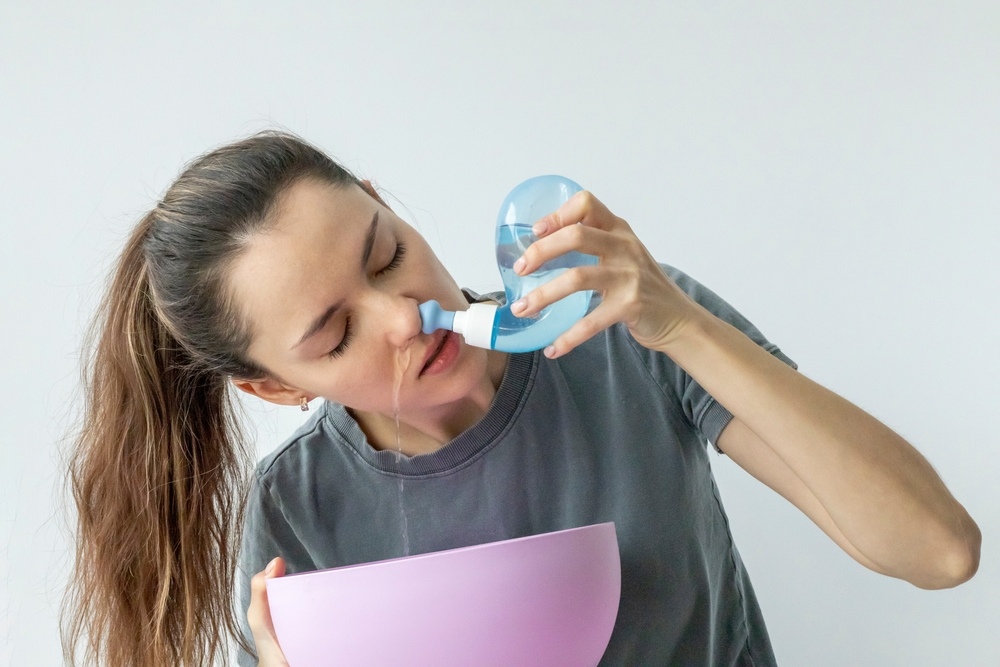
Yogic practices like Jal Neti have proven to be an easy and convenient way of cleansing nasal clogging and reducing breathing hindrance (4). An important part of Hatha Yoga, this exercise may reduce the symptoms of cold, snoring, and rhinitis, besides easing the management of sinusitis and asthma (5). This technique also helps in preventing respiratory tract diseases that can affect lung health and trigger influenza (6). So, this yogic practice may be quite effective for offering you relief from sinusitis to help you breathe freely.
Steps to Follow:
- Take some lukewarm salt water in a pot. Ensure it has an opening for easy water flow.
- Tilt your head to one side, ensuring your nostrils are accessible for water cleansing.
- Take a deep breath through your mouth. Avoid breathing through your nostrils.
- Put the nozzle or opening of the pot beneath the nostril.
- Gently establish direct contact between the opening and your nostril for direct water flow into the nostril.
- Stay in this titled position to let water pass through one nostril and come out through another.
- You may repeat the same procedure for both nostrils 5-10 times for each to ensure your nose is clean.
Note: This yoga practice can be quite challenging and it should be done under the supervision of a yoga practitioner.
3. Kapalbhati Pranayama (Shining Skull Pranayama)
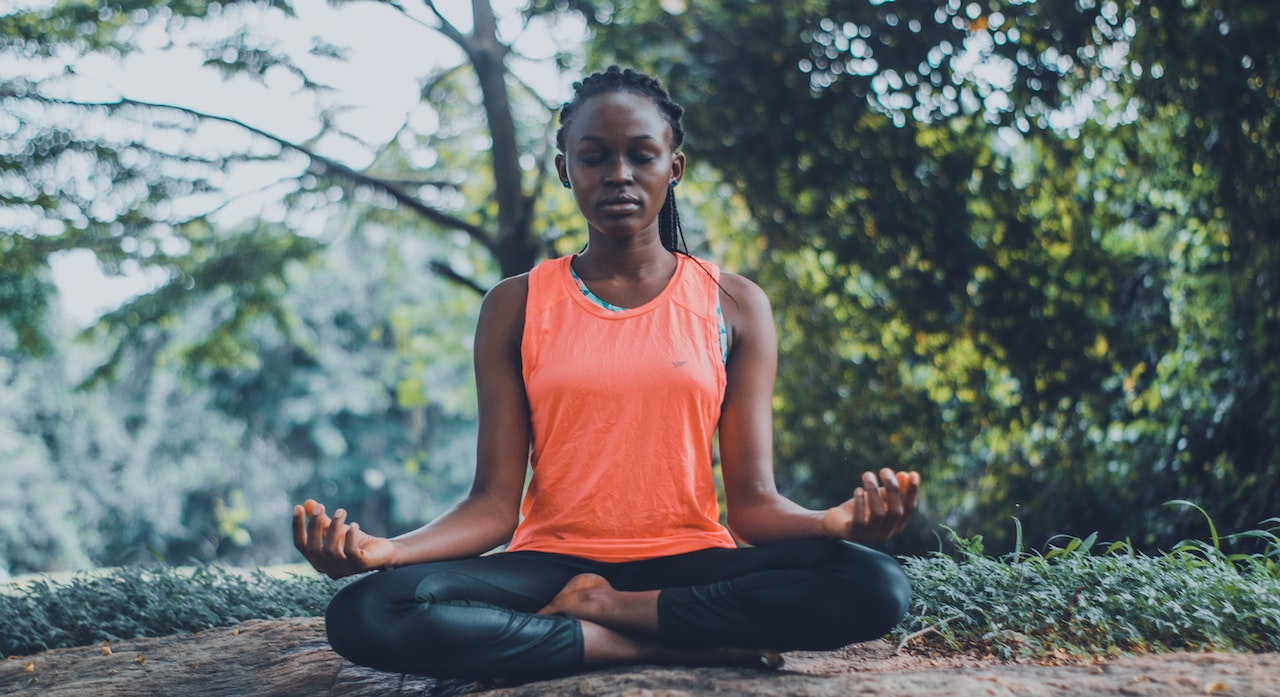
Oxygen saturation is crucial for maintaining oxygen supply in different internal organs like kidneys, brain, and heart as inadequate oxygen saturation may lead to hypoxia (7). Kapalbhati pranayama may enhance oxygen saturation and help in the efficient functioning of the diaphragm — leading to effortless breathing and reduced occurrences of congestion (8). This yogic practice may enhance blood flow to help in improving cardiovascular and physical health leading to a smoother exhalation and relaxed heartbeating (9). So, with this shining skull pranayama, you can ensure you’re breathing without feeling suffocated and your internal organs are getting a rich supply of oxygen to function properly. The added perk is that this yogic practice can make your forehead appear to glow naturally (10).
Steps to Follow:
- Sit on a sturdy floor or yoga mat in a comfortable position.
- Keep your spine erect and palms on your knees.
- Take a long, deep breath while sitting in this meditative position.
- Pull your stomach inwards and exhale gently.
- You may place your hand on the stomach to sense the contraction and relaxation of the stomach.
- Do this 18-20 times and relax after completing 10-15 breaths before starting again.
4. Matsya Asana (Fish Pose)
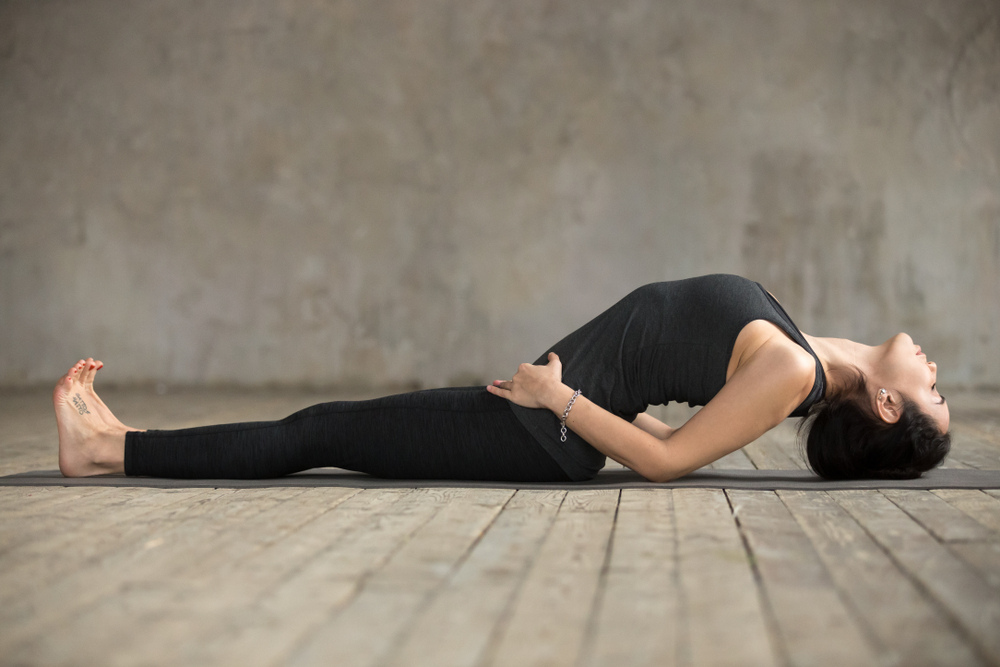
Shatkarma, the cleansing of internal organs, helps in nasal purification and improving breathing efficiency (9). Cleansing of internal organs, also called Shatkarma, or Dhauti, not only helps your nose feel relieved but also helps in reducing digestive issues like constipation, gastritis, and other pancreatic disorders (11). So, with this fish yoga pose, you can provide your body with soothing detox and refinement naturally.
Steps to Follow:
- Spread a soft mat on the floor or ensure the floor is comfortable to lie on.
- Lie down on your back properly.
- Ensure your feet are joined together with your toes facing upwards.
- Place your hands below your back, close to your buttocks. Ensure the palms are facing downwards to protect your hands from getting hurt.
- Shift your weight on your elbows and lift your chest upwards.
- When your chest is lifted properly, bring your head close to the ground.
- As you do this practice, avoid putting any pressure on your head or chest.
- Breathe gently while maintaining this arch position.
- You may remain in this position for 2-3 minutes.
- Unwind gently by lifting your head followed by your chest.
- Relax for some time and repeat this exercise 5-10 times.
5. Sutra Neti (Thread Cleansing)
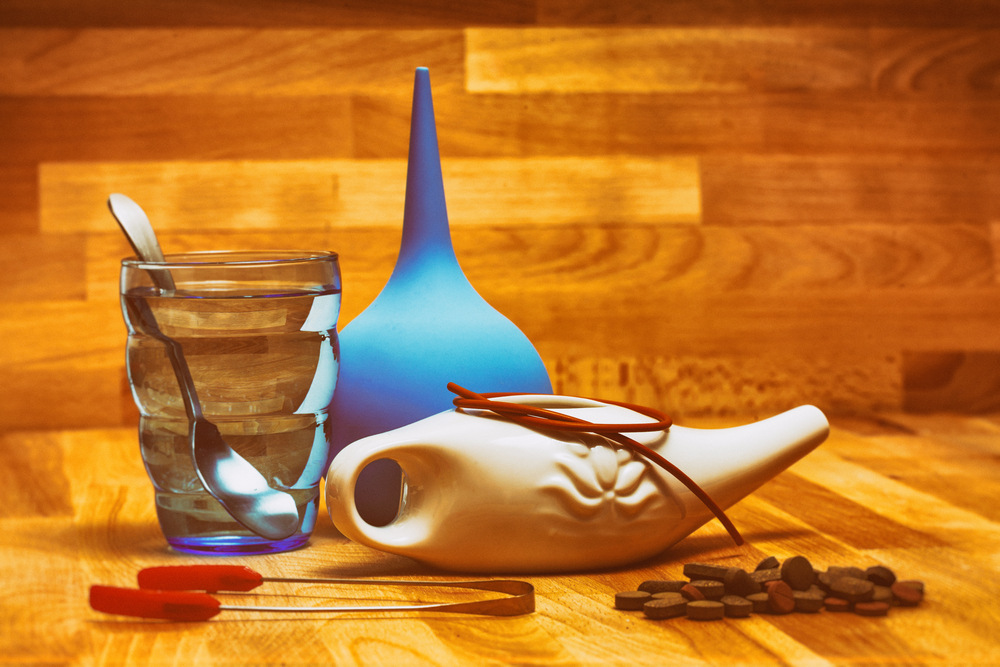
Sutra Neti involves the practice of Ujjayi breath, which helps in eliminating symptoms of runny nose, and cold and reducing headache (9). It has also been proven to make sinuses healthy and clean (12). So, even if you are not dealing with any sinus concerns, you can do this yogic practice daily to protect your sinus from severe infections and allergies. However, if you’re new to this practice, you should do it with your yoga practitioner or a yoga expert.
Steps to Follow:
- Take a surgical thread or a soft clean thread of an appropriate length.
- Insert it slowly into one of our nostrils by keeping one of its ends in your hand.
- Continue to gently push it inside the nostril until you feel it reach your throat.
- Open the mouth properly.
- Try pulling the other end of the thread through your mouth, by keeping your hand movements light and gentle.
- Don’t pull the thread forcibly. Take your time with this yogic practice.
- During this process, continue to keep one end of the thread in one hand while using another to bring it out.
- Once you get the other end of the thread in your hand, try to move it back and forth to clean the nasal passage as well as the throat properly.
- Do this for almost 5 minutes.
- Clean the thread before using it for another nostril.
- Repeat 5-10 times, as per your tolerance.
Note: If you’re new to this practice, you should do it under the supervision of a yoga expert.
6. Ujjayi Pranayama (Ocean Breathing)

Breathing through the nose helps in filtering the air and can protect you from inhaling environmental pollutants including bacteria and dust to prevent nasal irritations and infections (13). Ujjayi Pranayama, also called victory breath pranayama, helps in enhancing breathing efficiency via the nose and clearing up the throat (14). So, with ujjayi pranayama, you may as well get rid of bacterial infections.
Steps to Follow:
- Close your eyes and lips gently without putting any pressure on them.
- Shift your focus to breathing through the nose.
- Try to contract the muscles of your throat while ensuring your lips are sealed.
- Take a deep breath in and out via nostrils.
- Repeat this nasal breathing technique 10-12 times at least.
Impressive Benefits of Yoga for Sinusitis
1. May Help Prevent Glaucoma
Glaucoma has been recognized as a dominant cause of blindness (15). It may lead to permanent blindness, or visual loss besides posing a risk for many eye serious concerns (16). Eyes are also affected because of sinusitis and with this practice, you can protect your eyes from this fatal disease.
2. May Lower Blood Pressure
High blood pressure may increase the risk of cardiovascular diseases (17). Yogic practices may help in reducing heart rate, and diastolic and systolic blood pressure (18). So, yoga poses may help to keep your heart healthy while you deal with nagging sinus worries.
3. May Increase Muscular Flexibility
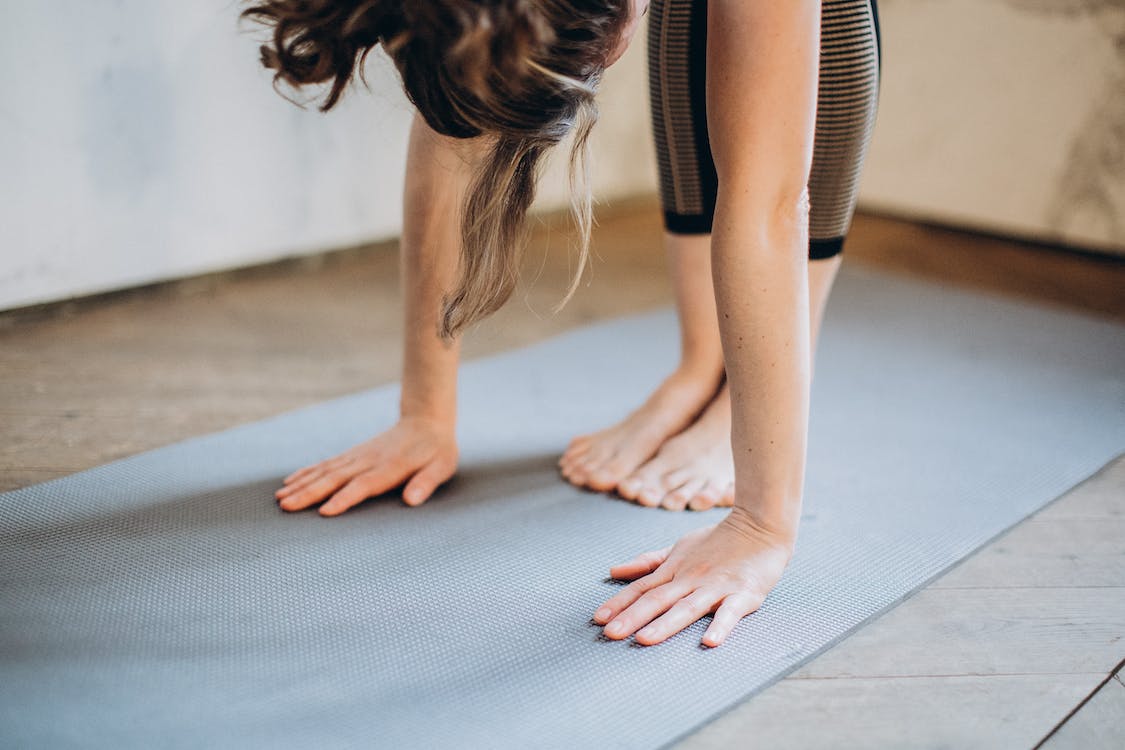
Nasal congestion may result in scarring or crusting within the nose, besides leading to complicated nasal conditions that require surgeries (19). It is also associated with severe itching and allergy (20). With increased flexibility of nasal muscles, the movement in the nasal cavity is uninterrupted to allow the drainage of mucus and other residues (18). Yoga asanas also improve tissue functioning and can relieve you from nasal suffocation (21).
4. May Enhance Pulmonary Function
Improper lung function can weaken respiratory muscles and deteriorate your respiratory system (22). Exercise for sinusitis helps in enhancing the functioning of the lungs to enhance exhalation through the lungs (18). So, by keeping your sinus in check, you can ensure your body gets rid of waste gas effectively.
5. May Help Improve Sleep Cycle
Sinus causes disturbances in sleep patterns thereby disrupting the sleep cycle (20). Yoga has proven to induce calmness and relieve anxiety and can be quite effective in treating sleep disorders (18). So, by including yoga in your routine, you can bid congested sleep goodbye and have a good night’s sleep.
6. May Induce Happiness
Yoga for sinusitis helps in the expulsion of carbon dioxide which has been proven to induce a sense of joy in your body (18). While nasal issues may give you a tough time, yoga can come in handy to get you a dose of euphoria while ensuring you’re breathing easily.
Conclusion
Sinus can be quite an uncomfortable experience. Your breathing may not be smooth and you may suffer from severe headaches and facial pain. However, yoga for sinusitis can be supremely effective in offering respite from irksome nasal congestion and allergies. You can try different styles of yoga at home and keep your sinuses protected and healthy. If you want a more targeted yogic experience, you may also reach out to a yogic practitioner and get the most out of yoga asanas to feel relieved from recurrent sinus issues.
ALSO READ: Yoga for Muscle Building to Make Your Body Flexible And Strong





 JOIN OUR WHATSAPP CHANNEL
JOIN OUR WHATSAPP CHANNEL
































































































